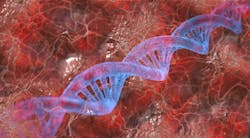Rare immune cell type explains how body keeps common virus in check
A rare immune cell type is key to the body’s immune response to cytomegalovirus (CMV), which infects more than half of the human population, a new study finds, according to a news release from New York Langone Health.
Published in Science Immunology, the work showed that plasmacytoid dendritic cells (pDCs) react specifically to CMV inside cells, where the virus “hides” from the immune system for years after an original infection. The virus can be reactivated, however, and multiply to damage organs when the body is stressed by other illnesses of aging, such as severe infections and sepsis, or an organ transplant.
Activated pDCs are known to produce the immune signaling protein interferon alpha in response to many viruses, but were previously found to respond poorly to CMV. The current study confirmed that this cell type is not activated by CMV viral particles floating freely in the body, but may represent the body’s strong, unique immune response to CMV-infected cells. With pDCs known to fail with age, their capacity to produce interferon alpha fades as well.
“Our results suggest that, in cases where CMV reactivates in aging patients thanks to another illness, treatment with interferon alpha, already U.S. Food and Drug Administration (FDA)-approved in drug form for other diseases, could be used to keep persistent CMV in check,” says senior study author Boris Reizis, PhD, Professor in the Departments of Medicine and Pathology and Director of the newly launched Translational Immunology Center at NYU Langone Health. “Of course any application would first need to be studied in clinical trials.”
The immune system is known to survey the “insides” of cells for signs of viral infection, and to detect and destroy infected cells before a virus can force them to mass produce copies of itself. Such surveillance for CMV was thought to be accomplished by immune cells called “natural killer” (NK) cells and certain T cells.
The current authors found that pDCs may be the key to specifically detecting, and keeping constant pressure on, even small amounts of virus contained within CMV-infected cells, alerting NK cells to their presence. Furthermore, the new study found that pDCs sense CMV-infected cells through a protein called Toll-like receptor 9 (TLR9), which is known to recognize viral DNA ingested by pDCs. To become activated, the researchers say, a pDC must bump into an infected cell, scoop the virus from it, and detect its DNA through TLR9.
This study result reflects on how different viral types use different, but related molecules as their genetic material. Viruses like HIV inject RNA into human cells, along with enzymes that reverse transcribe it into DNA, which is then read by the host cell’s genetic machinery to build more RNA-containing viral particles. Past studies had shown that pDCs could detect cells infected with RNA viruses, but the current study is the first to show that they can do so for cells infected with a DNA-carrying virus such as CMV. The evidence suggests that this mechanism may be a universal human immune response to DNA viruses, many of which excel at evading the immune system.
While interferon production by pDC is usually rapid and lasts only several hours (so the response to viruses does not itself become dangerous), pDC responses to CMV-infected cells were prolonged, peaking at 8 to 16 hours and still ongoing after 30 hours. The research team also found that pDCs produce primarily interferon alpha and a related protein (interferon lambda), whereas “free-floating” viruses usually trigger production of a broad mix of signaling molecules (cytokines). These distinct features of pDC response appear particularly suited for control of CMV reactivation within cells, where the immune response must happen locally but with restraint to avert inflammatory damage to the cell.

